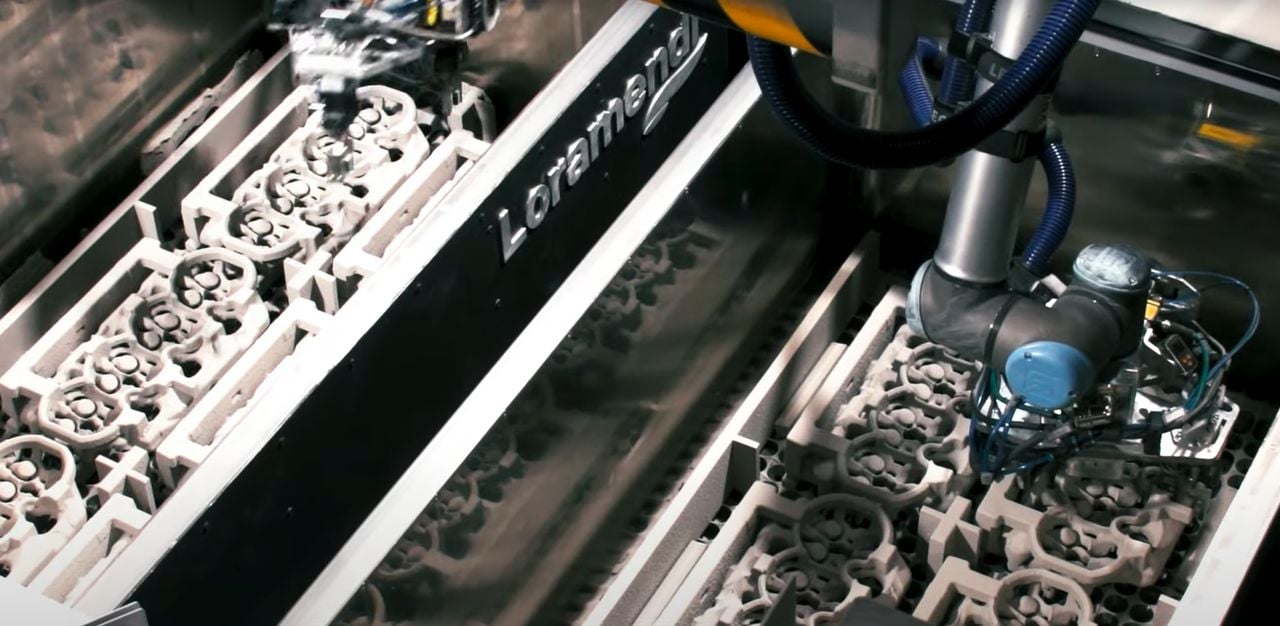
A German auto plant 3D prints sand cores for light metal casting, integrating additive manufacturing into engine production line.
The difference between 3D printing and additive manufacturing (AM) is quantitative: 3D printing is for prototypes and small batches, AM is 3D printing for production. It’s safe to say that 3D printing is well established by this point, but AM remains something of a question mark.
What does 3D printing for production actually look like?
One example comes from BMW Group, which incorporated five VX1300-X (VJET-X) 3D printers into high-performance engine production at its plant in Landshut, Germany. The VJET-X printers are being used to produce sand cores for engine components, a step that’s often been characterized as a slow and costly aspect of the production process.
However, as the video below shows, the five 3D printers are part of a larger workflow that includes industrial microwaves for curing and robotic arms for automated loading and unloading. Created in partnership with foundry designer Loramendi, it’s described as the world’s first fully automated additive serial 3D production line for sand cores.
“The fully-automated 3D production line at BMW’s Landshut plant is a key milestone not only for voxeljet, but for the entire 3D printing and automotive industry,” said Dr. Ingo Ederer, founder and CEO of voxeljet, in a company press release. “We believe this customized, near-zero emissions solution achieved in partnership between voxeljet, Loramendi and BMW will become an industry standard.”
According to the same press release, additive manufacturing has enabled BMW to improve its engine component design. The company has been able to 3D print sand cores that combine water jackets and outlets, as well as producing sand cores in one piece, which reduces the complexity of the engine components’ design.
Read the rest of this story at ENGINEERING.com
